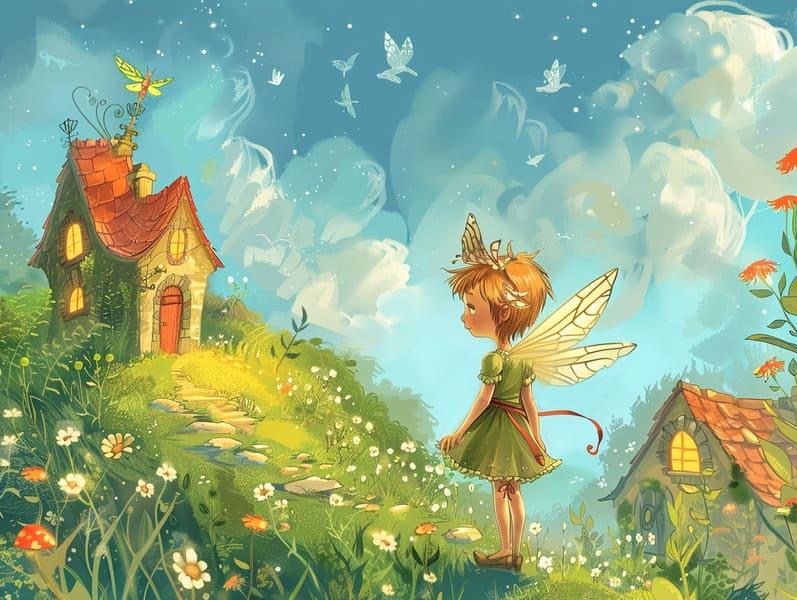The Birth of Traditional Fairy Tales with the Unfading Elegance.
The Birth of Traditional Fairy Tales with the Unfading Elegance.
Blog Article

Traditional fairy tales have long histories. These stories have been relayed from one generation to the next ages before they were ever recorded. They emerged from a variety of cultures, including Asian traditions. They were initially conveyed among grown-ups, often carrying themes and messages concerning the societal norms and beliefs of the time.
The famous Grimm duo, Jacob and Wilhelm (the Grimm brothers), were among the first to gather and publish many of these beloved fairy tales. Their collection, "Grimm's Fairy Stories," included stories like "The True Bride," "Hansel and Grethel," and "The True Story of Snow White," which have since become cornerstones in the world of traditional fairy tales. Similarly, Andersen's charming stories, such as "The Mermaid's Tale," and "The Duckling's Story," have floated into hearts worldwide, solidifying their place in the pantheon of treasured fairy tales.
Despite their historical roots, classic fairy tales remain as impactful as ever, especially as bedtime stories for kids. These charming stories are now available in numerous formats, including artistically illustrated books, delightful animations, and digital fairy tales.
Their lasting presence can be connected to several magical reasons:
Significant Morals: Old fairy tales often provide important moral lessons. Stories like "The Story of the Boy Who Cried Wolf" teach the value of sincerity, while "The Tortoise and the Hare" exemplify the virtues of tenacity and humility. These narratives offer the young clear distinctions between moral and immoral, forming their moral compass in a gentle yet impactful way.
Warmth and Understanding: Fairy tales frequently involve individuals facing trials and tribulations, motivating readers to empathize with their struggles and cheer for their triumphs. For instance, "Beauty and the Beast" conveys the significance of valuing inner qualities to appreciate the inner being of a being, developing warmth and comprehension.
Cultural Awareness: Many old fairy tales are saturated in the cultural contexts from which they blossomed. Delving into these narratives can provide captivating looks into different heritages, promoting a sense of global understanding and comprehension.
Inventiveness and Fantasy: The fantastical elements in traditional fairy tales—talking animals—unleash children’s inventiveness. These narratives carry readers to magical realms, kindling fantasy ideas and a sense of magic that stays a lifetime.
Classic fairy tales are not only fantastical but also edifying. They work as enchanted tools in building various cognitive and affective skills in children. When traditional fairy tales are recited, they advance language acquisition by offering new terms and meanings and complex sentence structures. This practice also cultivates hearing perception and concentration, as children focus on every detail, looking forward to see what happens next.
Furthermore, contemplating the themes and characters of timeless fairy tales can improve logical thinking and analytical skills. Young ones are educated to discover patterns, expect results, and catch on to cause and effect. These discussions also assist kids verbalize their thoughts and feelings, contributing to their emotional intelligence.
In today’s technological era, the proliferation of free fairy tales online has made these stories more reachable than ever. Websites and software feature broad selections of popular fairy tales that can be explored or played anytime, anywhere. Fairy tales told out loud are particularly liked, supplying an charming way for young readers to take part in these spellbinding stories. Audio stories and check here narrated videos transport characters and settings to life, often supplemented by mesmerizing audio effects and background music that enrich the tale-telling adventure.
The timeless fascination of old fairy tales lies in their ability to evolve to modern days while continuing with their essential themes. Contemporary versions of these fairy tales often integrate more diverse characters and modern settings, making them relevant to today’s audience. However, the key lessons of fearlessness, kindness, and fairness remain unchanged, continuing to appeal to kids of all ages.
Old fairy tales also offer a sense of solace and closeness. They supply a ordered narrative with a plain beginning, middle, and end, often concluding with the conclusion of conflicts and the triumph of morality over wickedness. This dependability can be heartening for kids, introducing a sense of constancy in an shifting world.
Old fairy tales continue to spellbind and educate new generations, maintaining their mystique and applicability in modern society. As nighttime stories for kids, they put out a perfect blend of delight and instruction, advancing moral values, empathy, and creativity. The proliferation of online fairy tales and the in demand status of fairy tales told out loud make sure that these classic narratives remain attainable to new generations.
By retaining and divulging these narratives, we continue to exalt the rich tapestry of human imagination and cultural heritage. Whether you are discovering a artistically illustrated book, perusing a cyber library, or listening through an read-aloud story, the grace of classic fairy tales is always within reach. These stories illustrate of the unchanging strength of narratives and its ability to draw us together across centuries and lands.
Even if you are experiencing a richly illustrated book, perusing a electronic collection, or listening via an read-aloud book, the mystique of bedtime fairy tales is always within reach.
These narratives demonstrate of the invariable essence of tales and its ability to unify us across centuries and lands, forging a link that captivates and teaches alike.